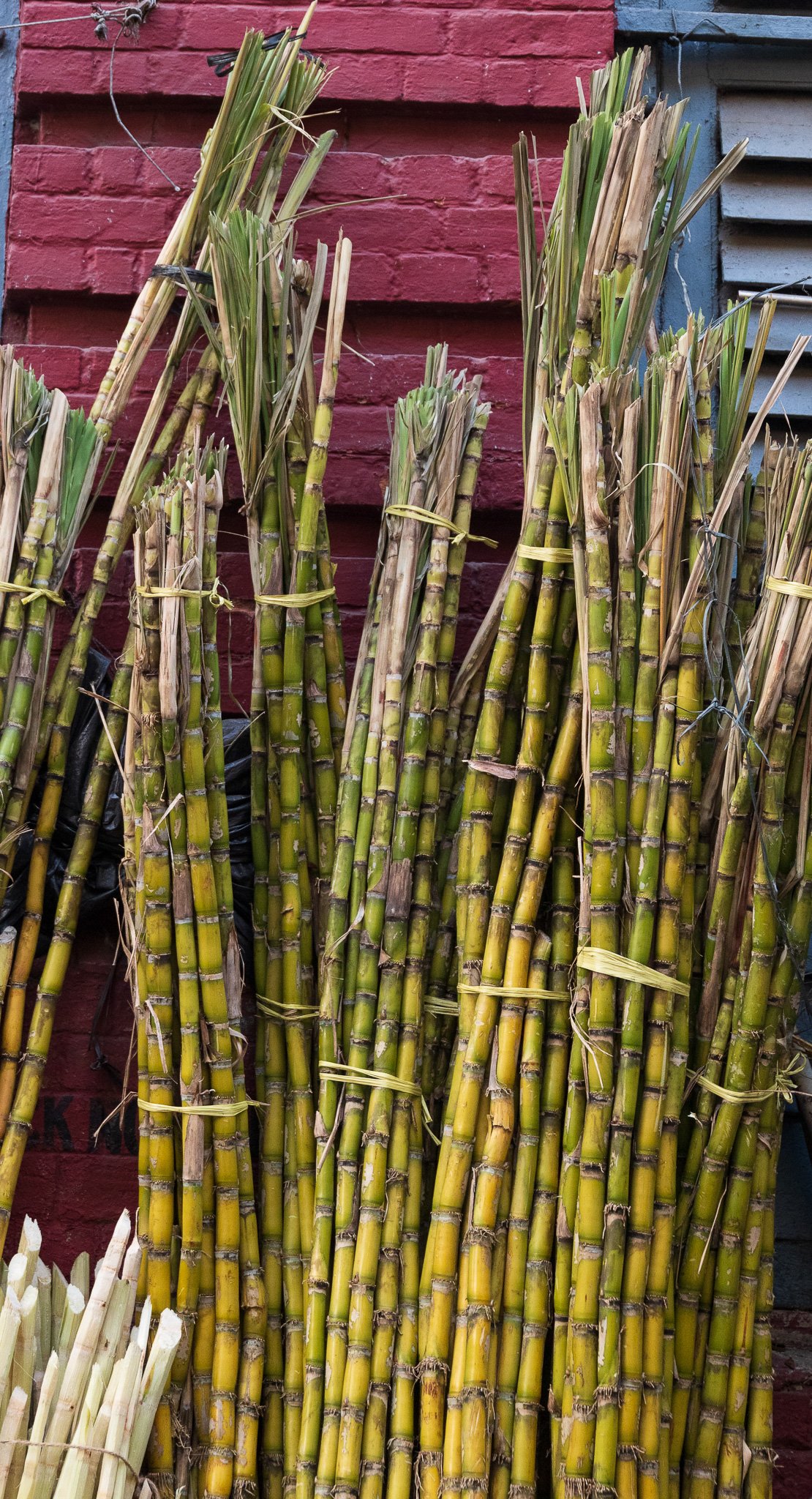Dear Reader, do you recall that scene in the 1960s musical Oliver, when he opens the window of his bedroom and the streets are alive with vendors selling their wares? There’s the rose-seller, milkmaid, strawberry-seller and knife grinder. And you’ll recall these merchants aren’t passively offering their products, they are on the streets singing out to the homeowners - “Who will buy the sweet red roses, two blooms for a penny”, “Will you buy any milk today, mistress?” or “Ripe, strawberries ripe!”
The streets of Kolkata are just like that movie scene except for a few important script changes.
First, replace those sweet roses with hot chai tea, switch the strawberries and milk for spicy rice, dhal, dhosas,‘muri’ (puffed rice) etc. Then, substitute the knife grinder for a butcher, working on the street filleting fresh fish or chicken. Now, instead of the lyrics of the song “who will buy?”, cue the sounds of people walking to work, dishes clattering, groups gathering to socialize over breakfast, and overlay this with the incrementally increasing noise of vehicles honking. Finally, you need to swap out the angelic Oliver, staring wide-eyed from his bedroom window, mesmerized by the merchants, with me, slightly less angelic but equally as captivated and not merely watching from a window but walking amongst the street vendors an active participant in this unfolding scene.
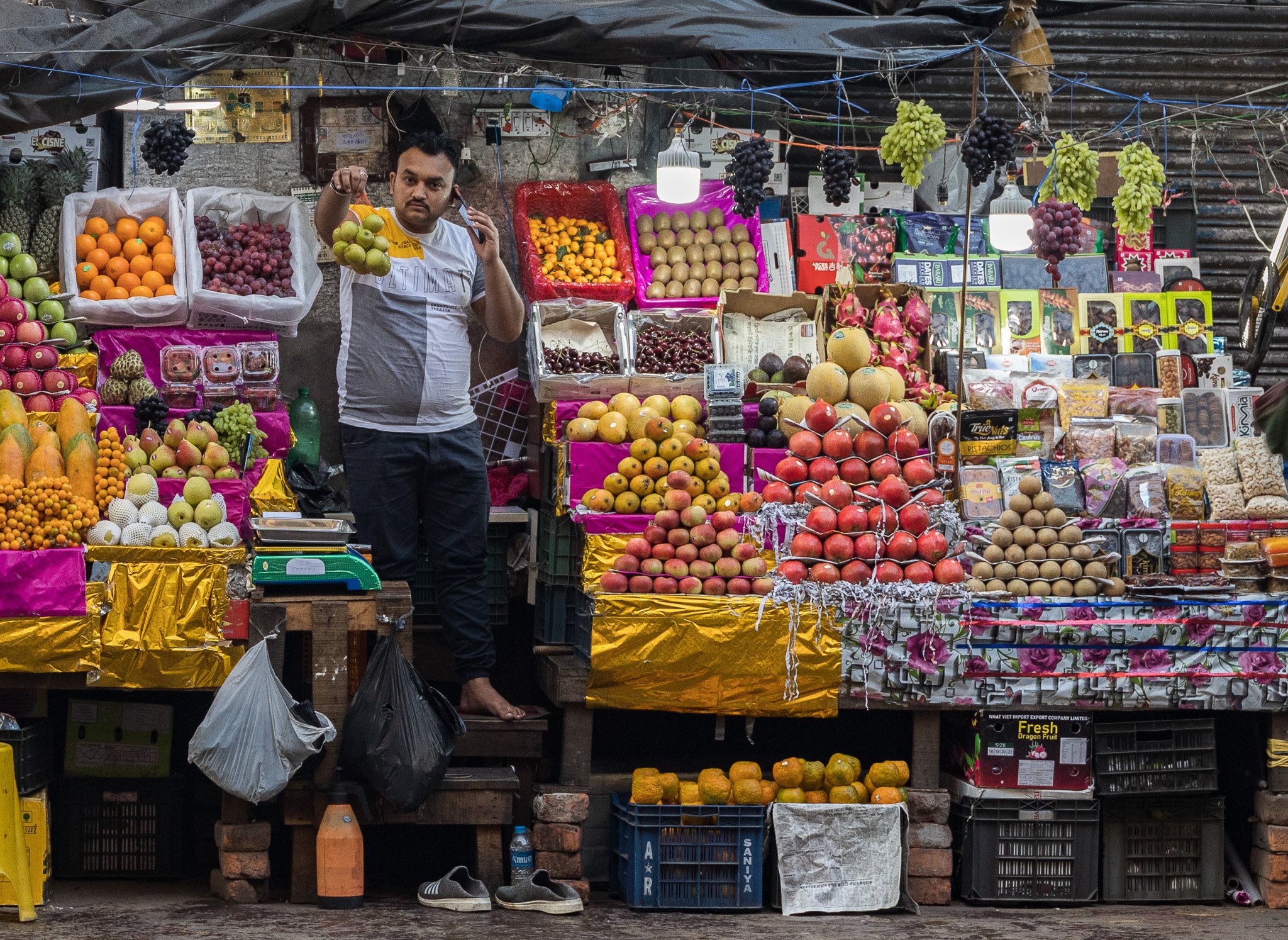
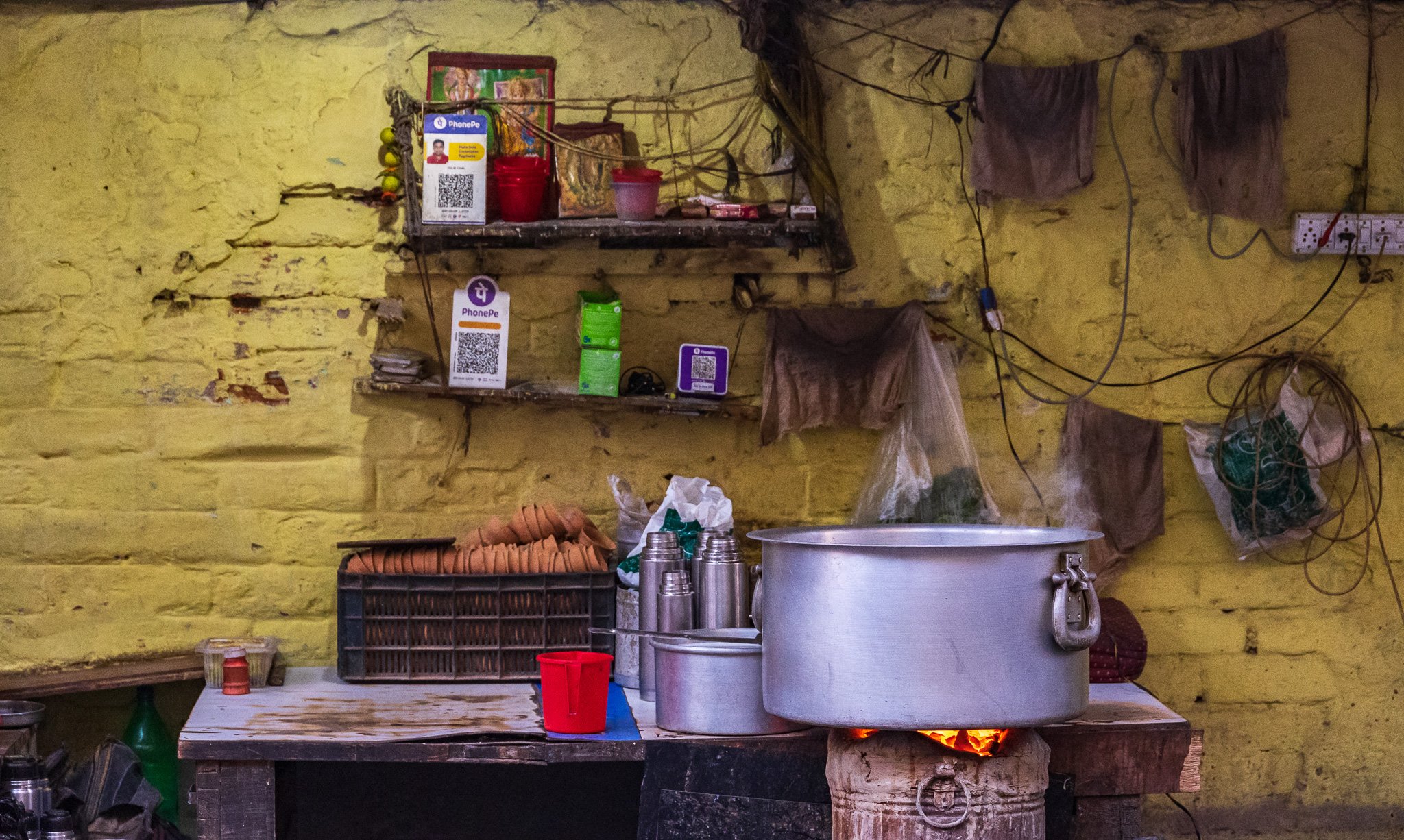
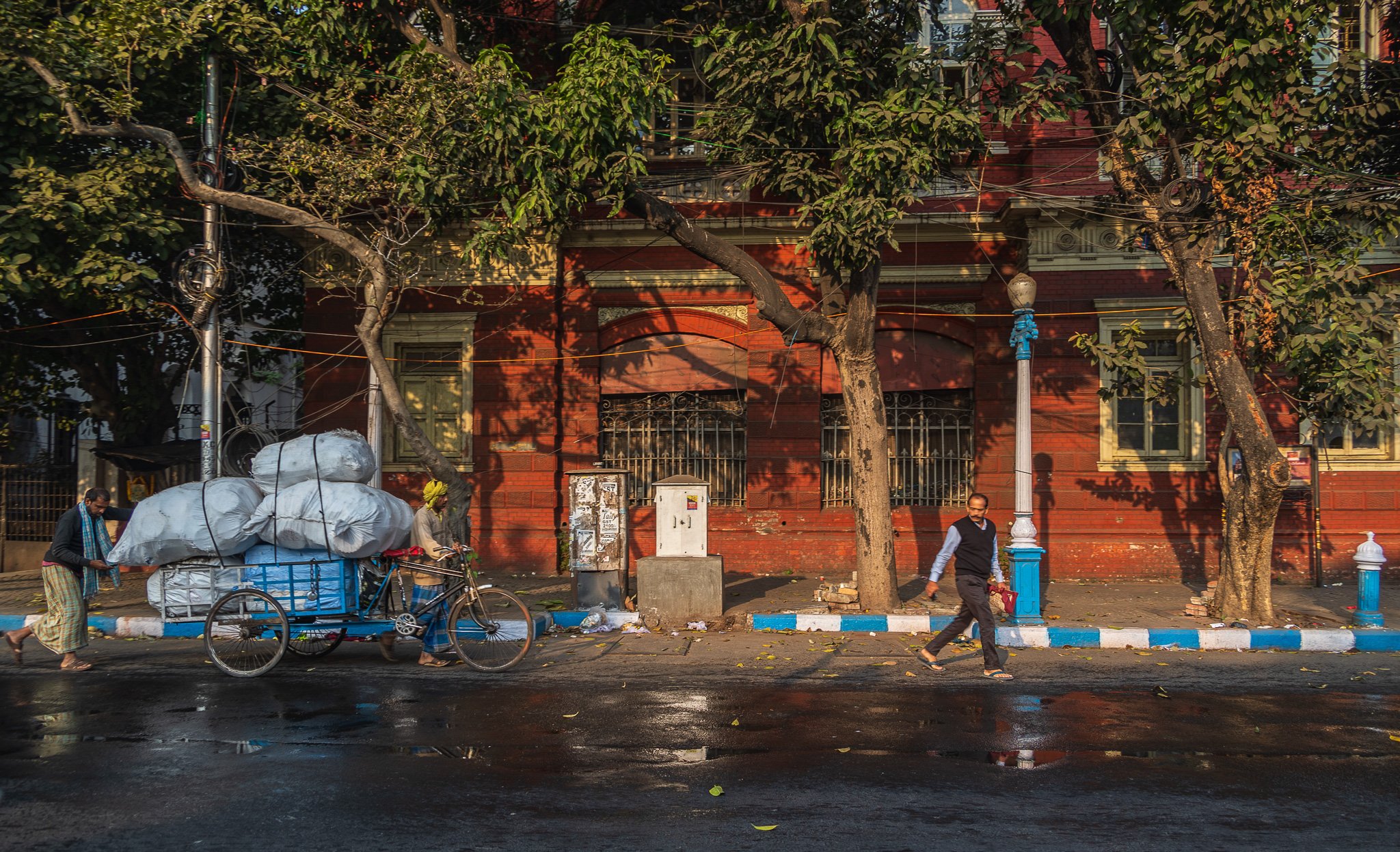
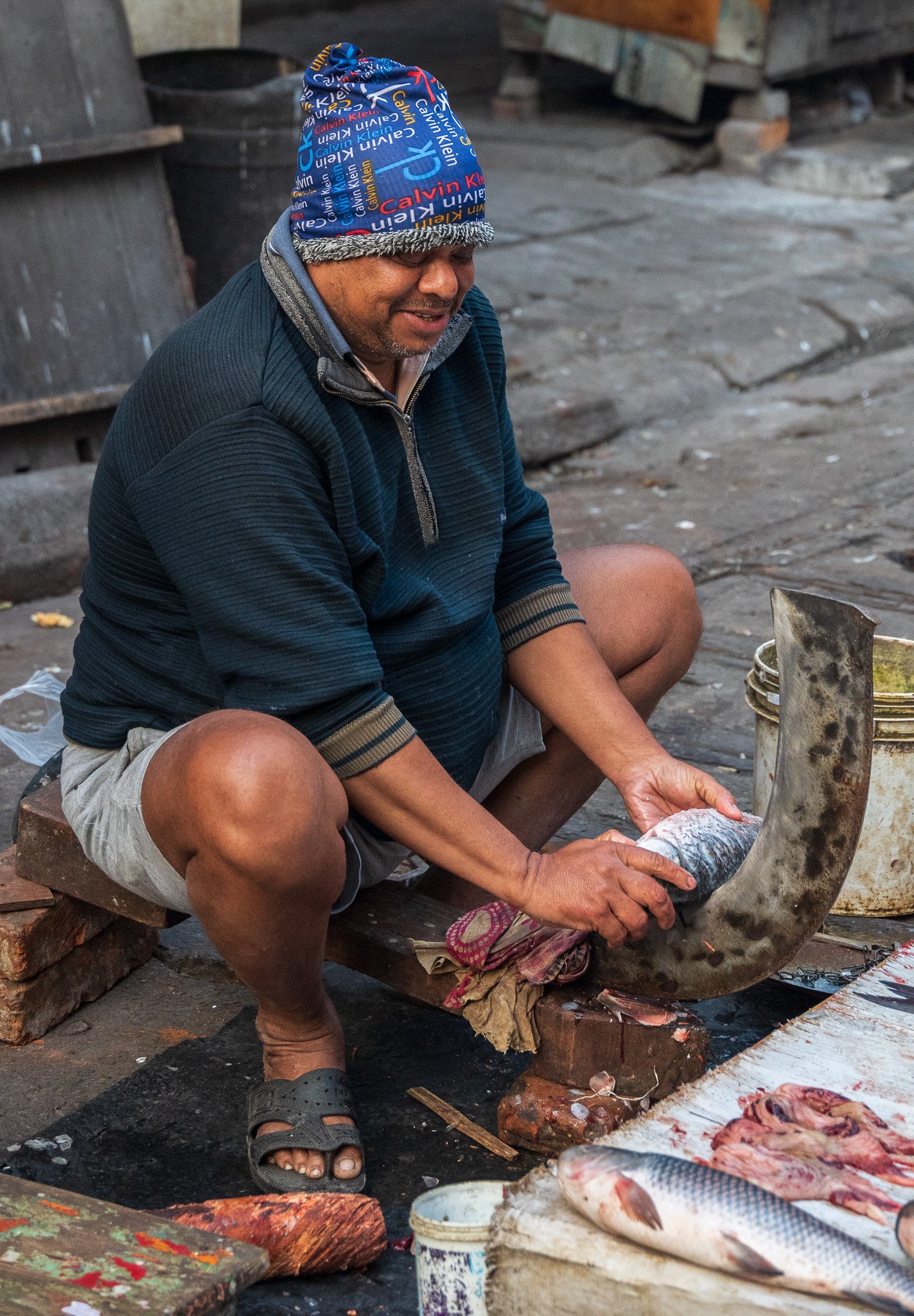

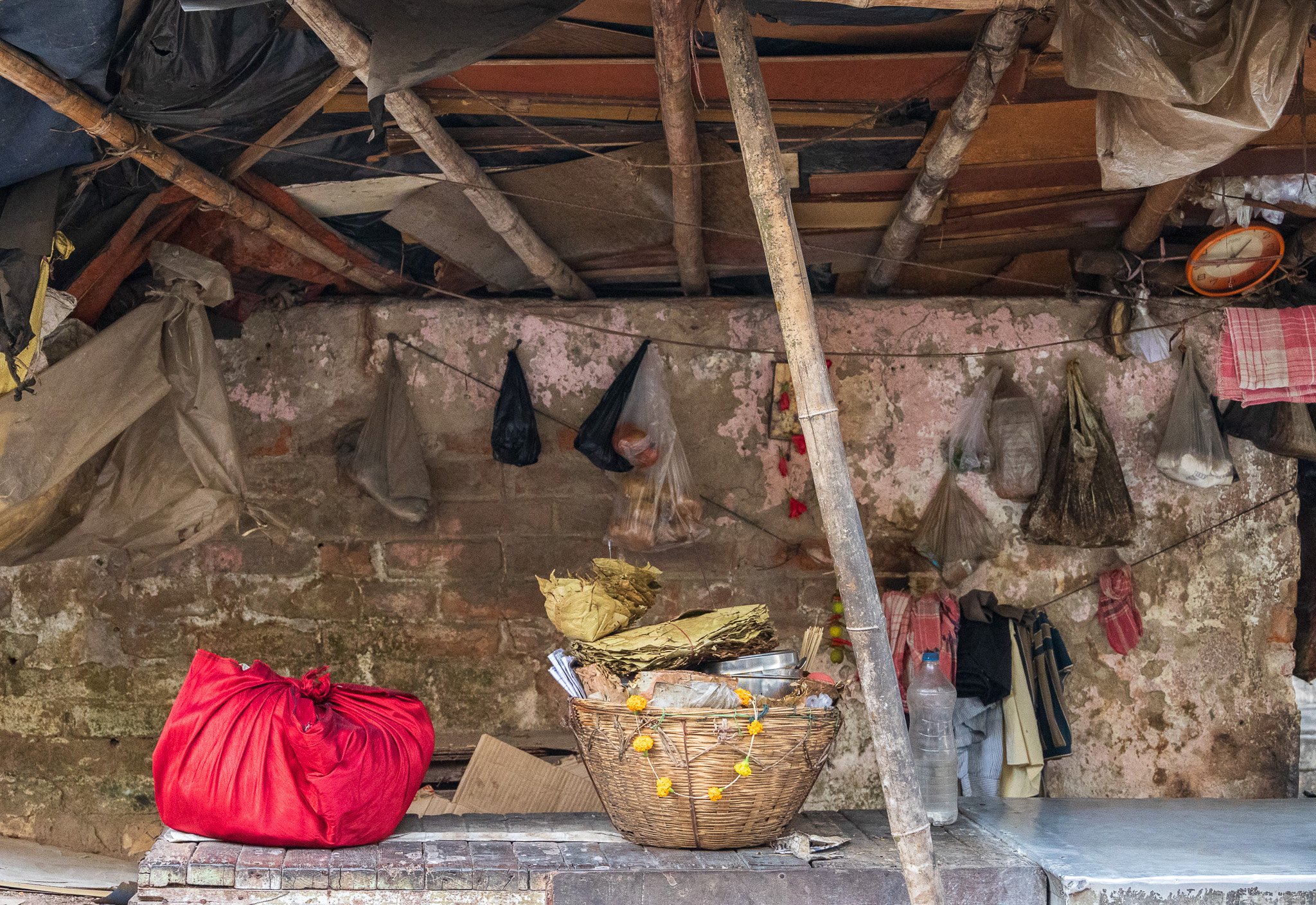
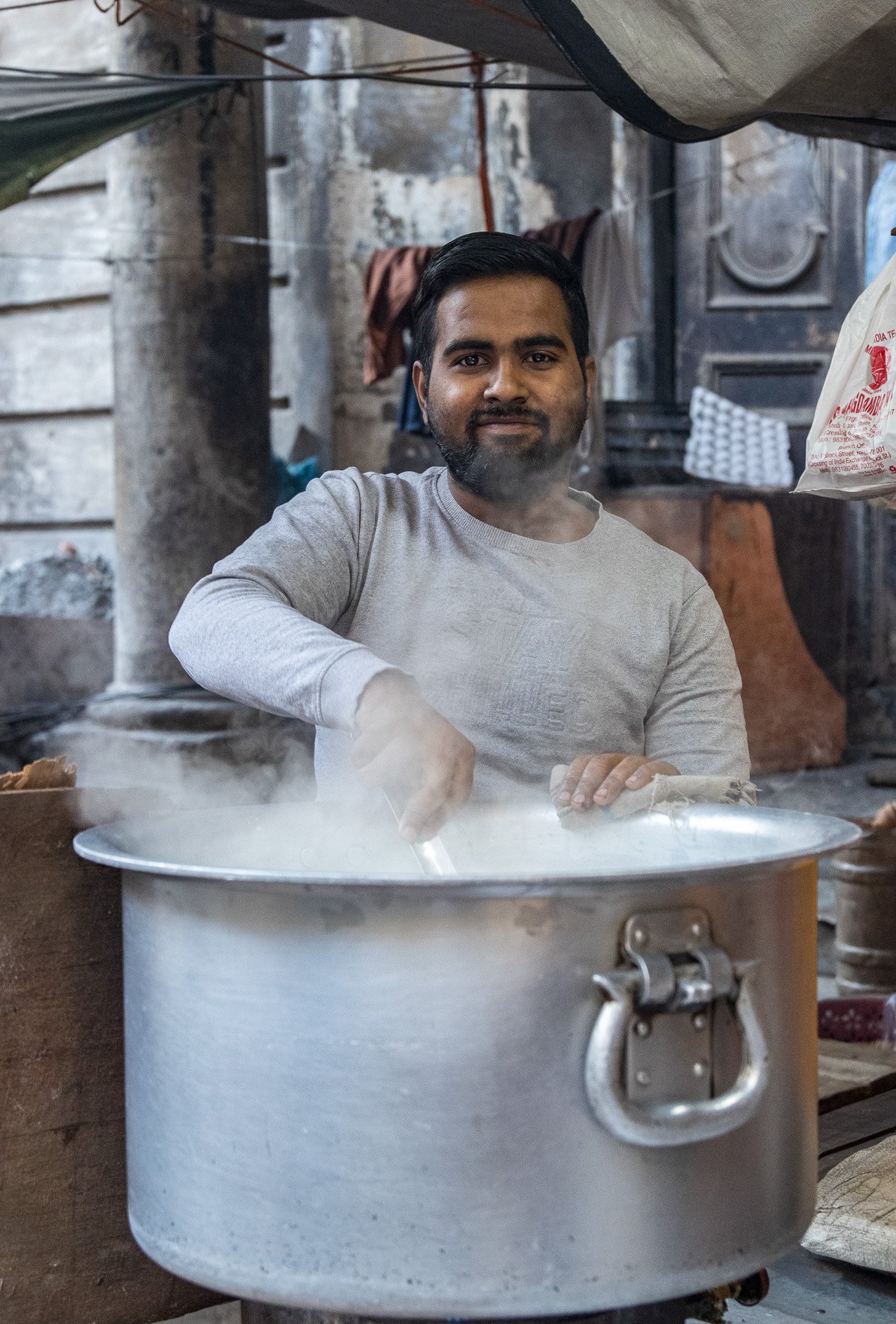
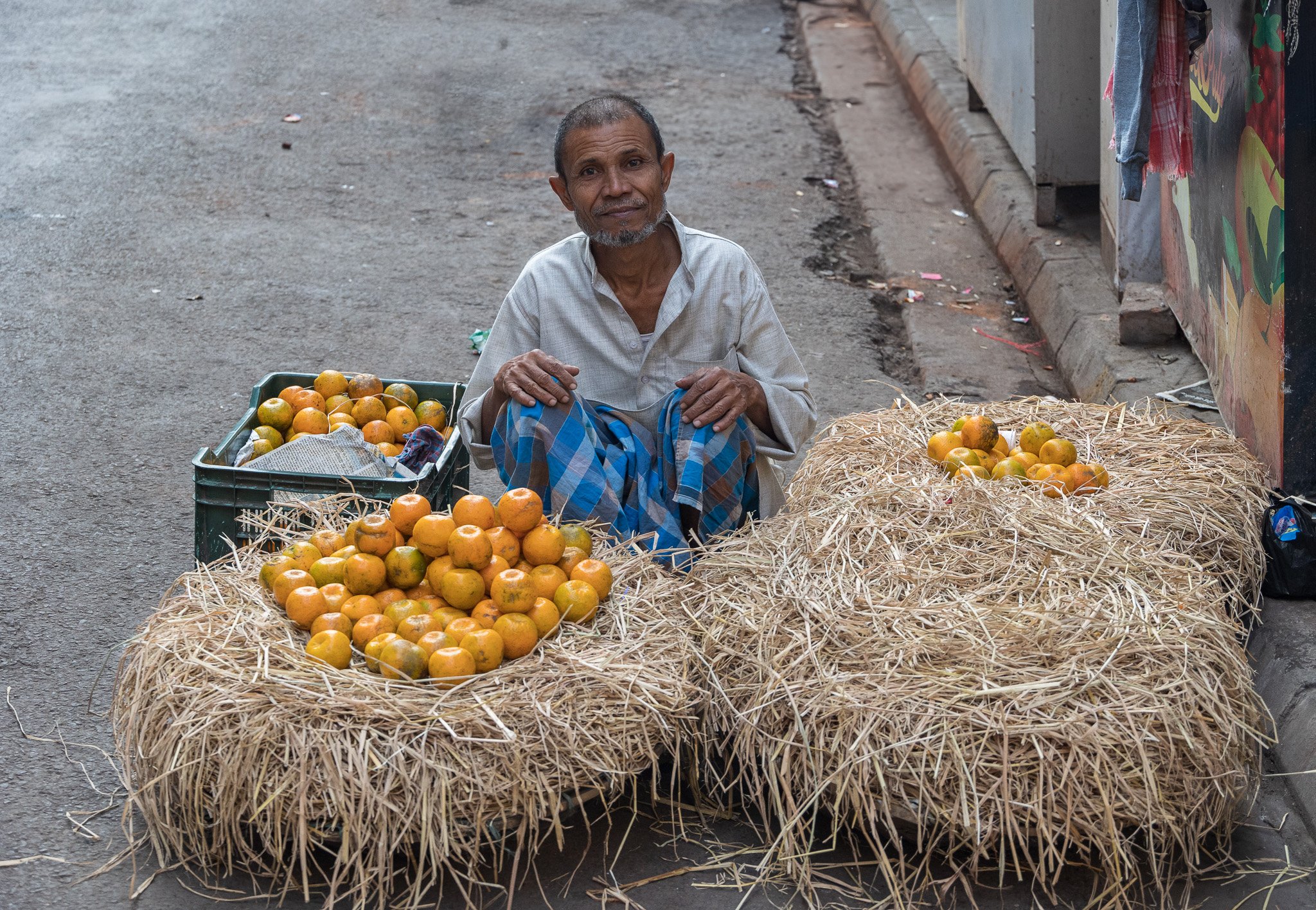
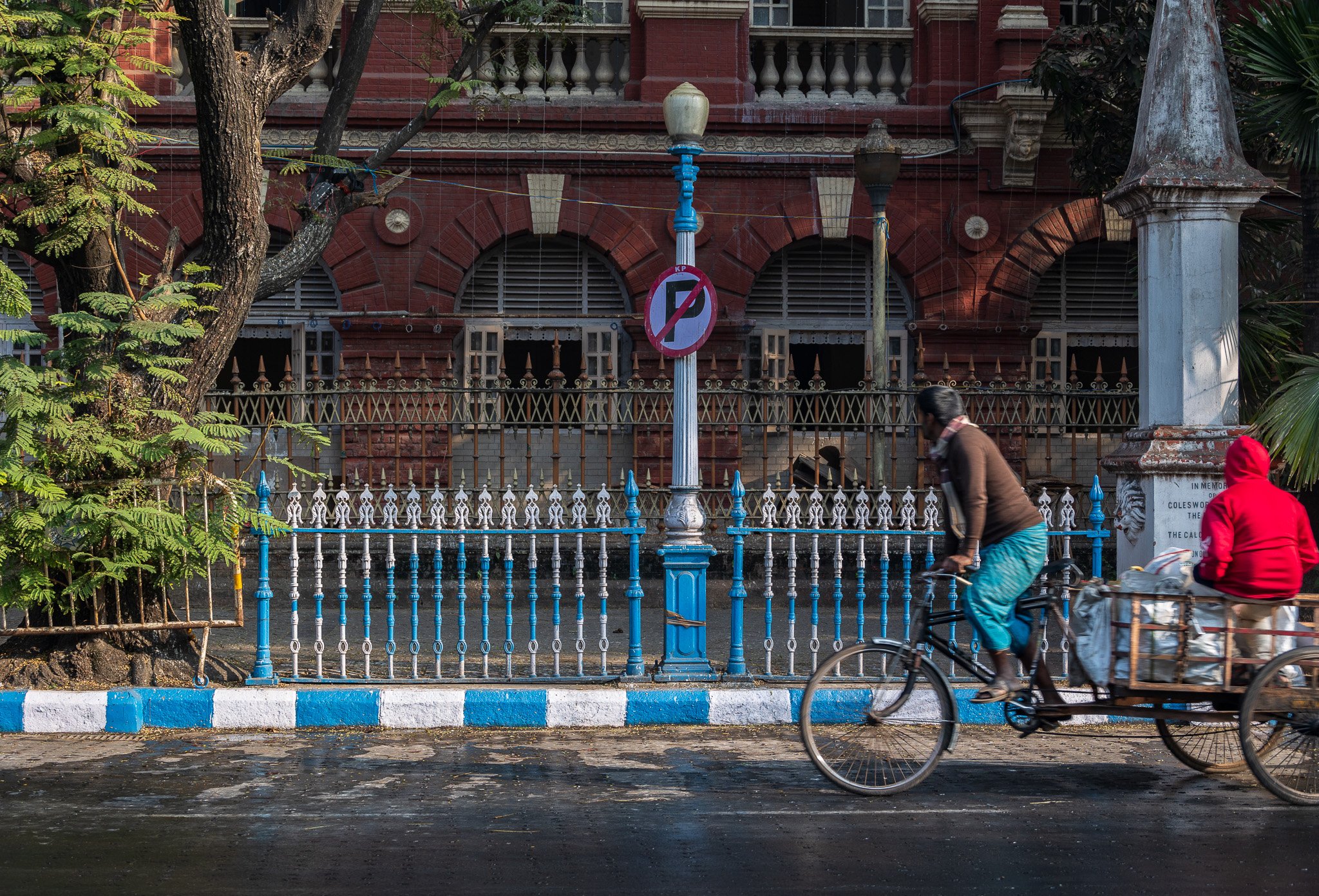
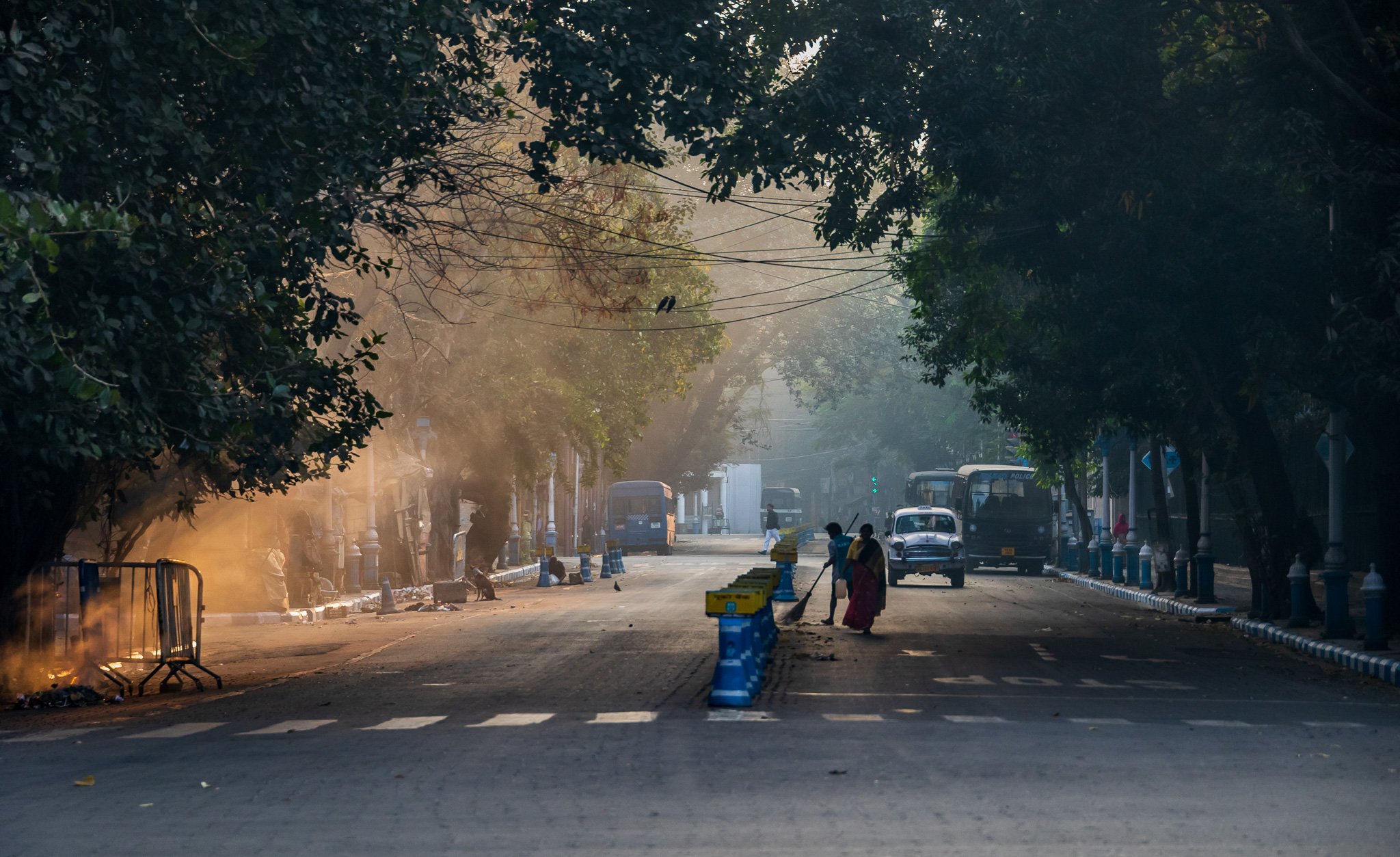
The primary reason I’m out walking is to see the colonial architecture — see post “Calcutta then” — but the impactful experience is because I’m starting to wake up at the same time as the city of Kolkata.
Life happens on the streets of Kolkata.
In a city with a population of almost 15 million, it’s estimated that about 300,000 live on the streets. Living on the streets is not the same as living in slums or bustees (registered slums) — the reality for a third of the population of Kolkata. Street living is actual street living, the place where people sleep, cook, eat, bathe, and perform all the ordinary routines of life.
As I walk through the various neighbourhoods, I temper my curiosity with humility, mindful that I’m privileged and enviable, having a home let alone enough wealth to travel. So many people in India live in abject poverty, and more are moving from rural areas to the big cities opting to be a “pavement dweller” to avoid the extra expenses of rent — because even in the slums people need to pay rent for water and electricity.
I avert my eyes when I come across a group of men,washing themselves from a tap on the street that flows at set times during the day. They bring their bars of soap, toothbrushes and even some clothes and scrub and clean with the same vigour as if it were a private shower.
These morning rituals are universal, regardless of our location or financial circumstances, we all engage in a series of habitual actions that shape our mornings and, to some extent, define our culture. We wake up and typically find our way to a bathroom to wash and then we get dressed. Usually these routines happen in private homes in North America but in Kolkata it is happening right in front of me.
Irrespective of where you live in Kolkata or your socioeconomic circumstance, most people eat breakfast on the street. So many of the first people awake in Kolkata are the vendors who start to cook the morning meals. I watched pots of fragrant chai tea being stirred as it simmered, the skillful chopping of vegetables to be stir-fried and combined with flavourful sauces and fresh rice, and the gentle warming of roti accompanied by the careful preparation of chutney.
What struck me most were the gathering of groups of students or workers, coming together to enjoy their morning meal together, so different from our North American traditions. Some sipped their chai tea from the customary terracotta cups, while others ventured to different vendors, seeking their preferred dishes. Breakfast on the streets in India is a unifier, social routines driving a sense of community and togetherness.
After the sun rose, the streets continued to get busier. More vendors appeared — a chair and mirror becomes a barber shop, perfect pyramids of fruit are arranged on wooden carts, it’s vibrant, bustling and energetic.
Kolkata epitomizes the resilience of the human spirit. The true treasure of Kolkata is not just the tangible offerings of the street vendors but the intangible energy that permeates throughout this city. As I retraced my steps back to my hotel, I realized the sights and sounds of the morning would become one of my favourite memories of India.

